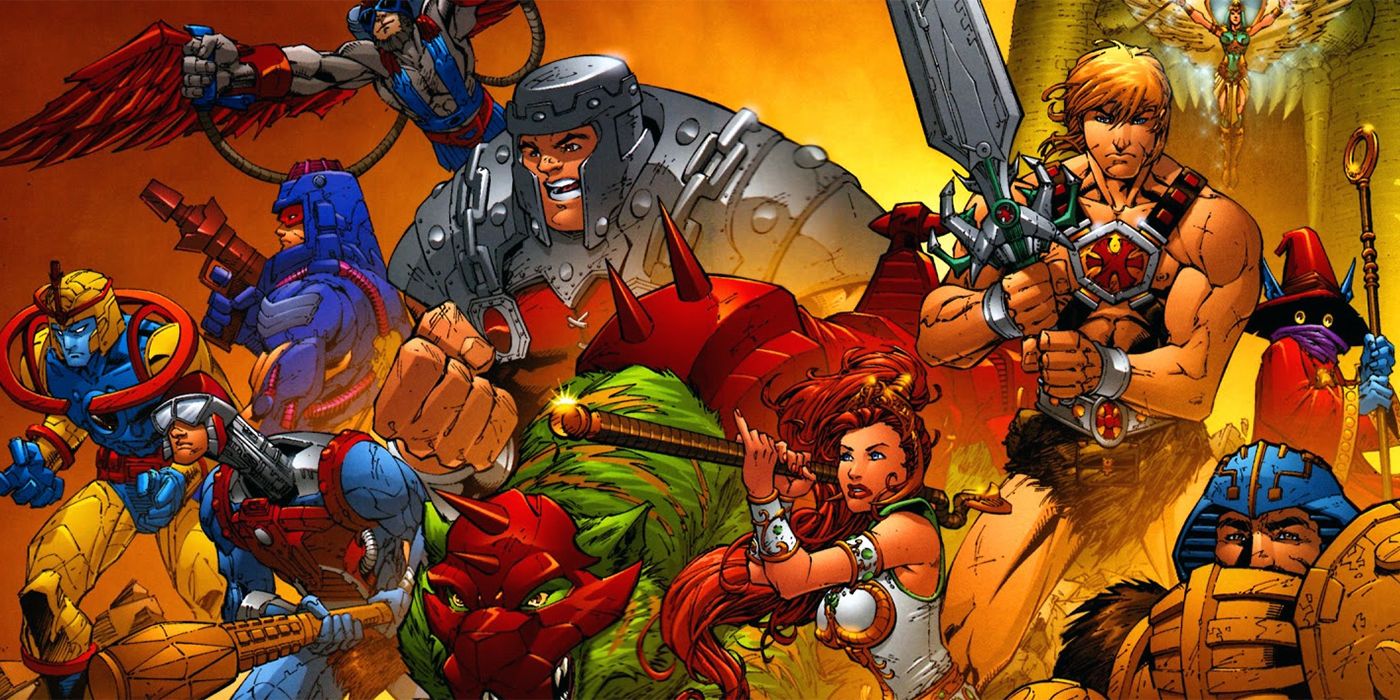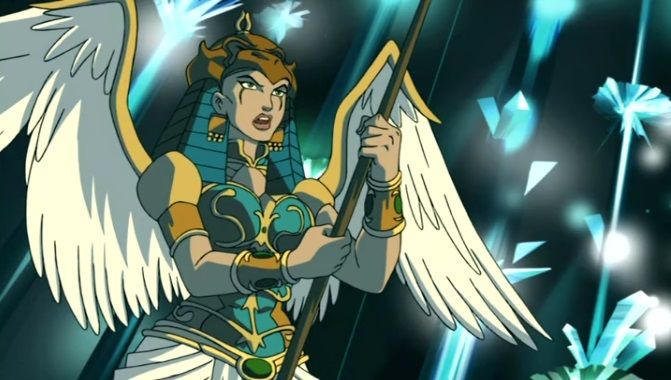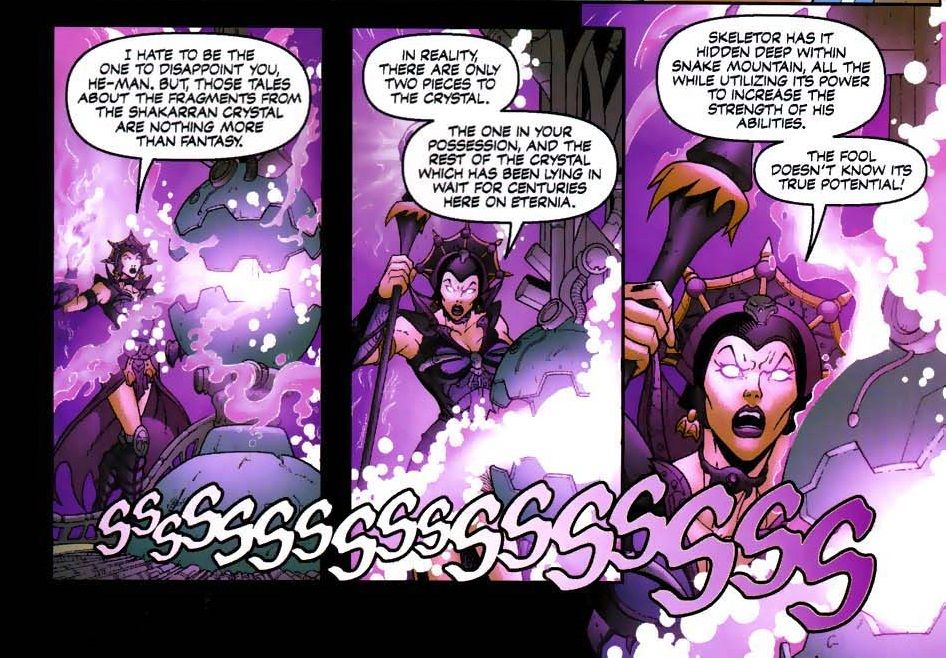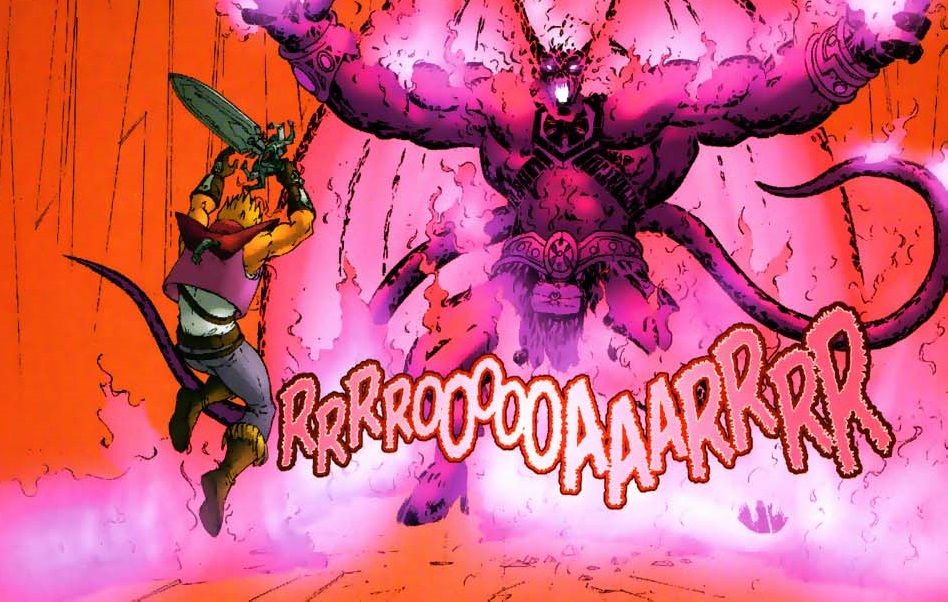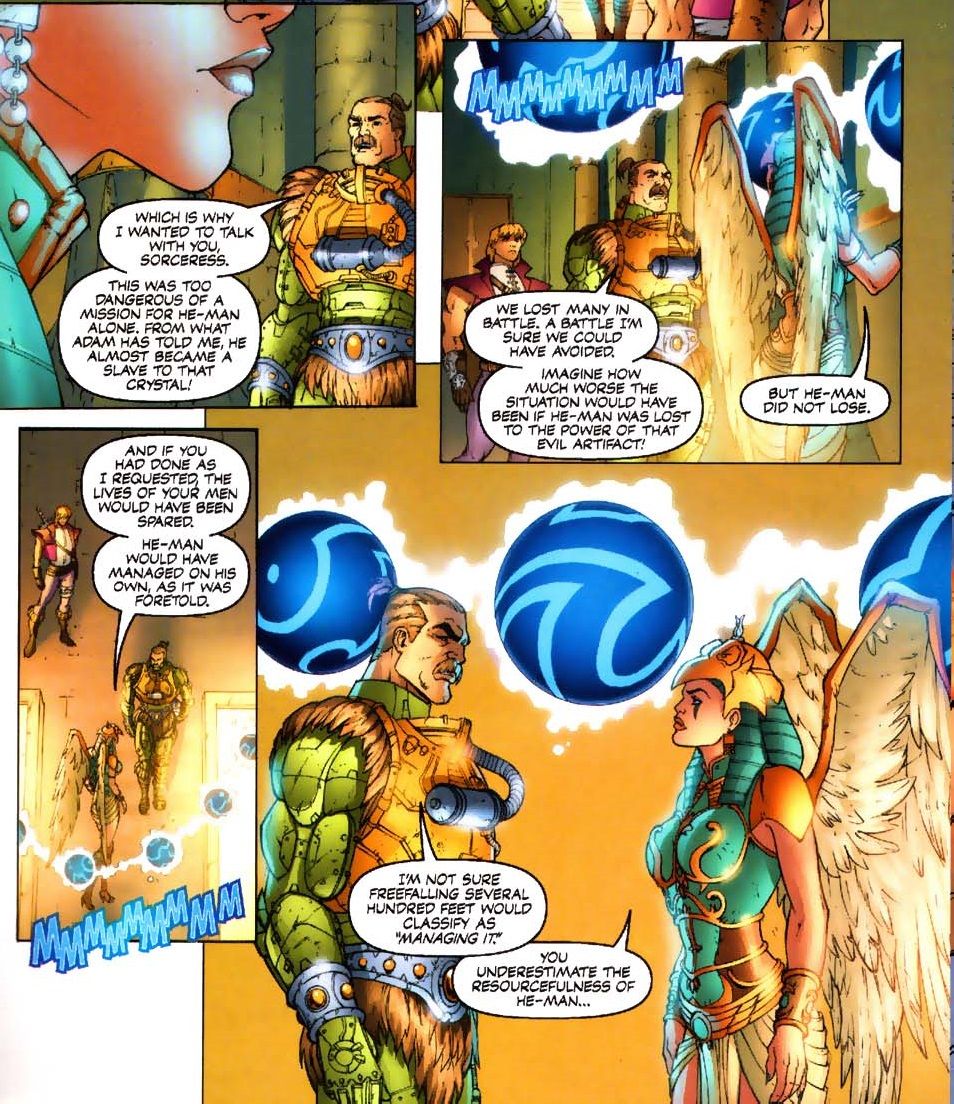Welcome to the ninth installment of Nostalgia Snake, a look at 2000s revivals of 1980s properties -- revivals now so old they're also quite nostalgic. (Hence the snake of nostalgia eating itself.) This week, we'll examine Image's initial Masters of the Universe miniseries, which was among that early wave of 1980s revivals. And if you have any suggestions for the future, let me hear them. Just contact me on Twitter.
Following the success of Devil's Due and Dreamwave Studios' respective revivals of G. I. Joe and Transformers, it was easy to imagine a Masters of the Universe relaunch to follow. (For a time, Masters of the Universe was the biggest action figure properties in the 1980s.) Creator Val Staples and his studio MVCreations landed the contract from toymaker Mattel, and the title was initially released through Image Comics.
Image was the early home of most of these revivals; Dreamwave was expected to release Transformers through Image, but broke away at the last minute to self-publish=. Like these other comics, Masters was initially a success, topping the sales charts with its premiere issue, outselling the entirety of Marvel and DC's lines. We've previously covered the history of Masters of the Universe in comics, and the landscape that saw the release of its first Image issue.
The initial Masters of the Universe miniseries from Image was 2002's "The Shard of Darkness." Writer Val Staples and artist Emiliano Santalucia established for the first time in the opening issue that Skeletor's magic powers come from a crystal shard, one with a mysterious connection to Eternia's roots. He-Man's comical sidekick Orko obtained another shard of the crystal, causing unintentional chaos and attracting the attention of the Sorceress (revamped in the 2000s line to convey an obvious influence from ancient Egyptian mythology).
She reveals the origin of the powerful Shakarran Crystal, sought by both good and evil; the crystal was destroyed, though shards remain, and occasionally surface. She sends He-Man on a quest to retrieve the shards, so she can recreate the crystal and banish it to another dimension. He-Man, however, must make this journey alone. His shard causes the normally pure hero to grow irritable and short-tempered, as he's tempted by the crystal's potential power.
The shard draws He-Man to Snake Mountain, where Evil-Lyn is conducting a coup against Skeletor. She has convinced flunkies Trapjaw and Tri-Klops to join her in reassembling the crystal, and is pleased by He-Man's entrance. Casting Evil-Lyn as a foil for Skeletor is an interesting idea, and one way the story is able to draw upon continuity fans remember from the 1980s animated series while still trying something new.
Evil-Lyn convinces He-Man that she's now fighting Skeletor's tyranny, and offers to take him to the Shakarran Crystal. He reluctantly follows her through a secret tunnel into Snake Mountain and, naturally, a trap is soon sprung.
However, Evil-Lyn underestimates how deeply the crystal has corrupted He-Man, causing him to fight back in a far nastier fashion than we'd ever see in the '80s Filmation cartoon. During their struggle, He-Man's shard falls into the hands of Skeletor, who arrives just in time to reveal he's known about Evil-Lyn's treachery all along.
That's another way the book plays against audience expectations. A literal adaptation of the Filmation animated series would depict Skeletor as an ineffective bungler, a a necessity of creating kid-friendly entertainment at the time: The villains couldn't be too scary, so they spent as much time impotently ranting and embarrassing themselves as they did menacing the heroes.
Masters fans, however, aren't likely to accept that interpretation in any series aimed at an older audience. Skeletor is a striking image, evoking artists from Frank Frazetta to Jack Kirby; fans don't want to see him as an ineffectual boob. They want stories that make him as threatening as he appeared to be on the painted merchandise of the 1980s. So, while Evil-Lyn's plot to overthrow Skeletor makes sense if you're taking all of his past defeats literally, the series also finds a way to give fans the more intimidating Master of Mayhem they always wanted.
Meanwhile, Man-at-Arms comes to the realization that He-Man is far more threatened by the shard's influence than any physical menace. He assembles an army to rescue He-Man from Snake Mountain, while Skeletor imprisons his disloyal aides (which, unfortunately, ends Evil Lyn's role in the story). When Skeletor attempts to exploit the crystal, it instead selects He-Man as its vessel. The story then shifts to He-Man's inner-consciousness, where his weak alter-ego Prince Adam must fight against a mutated version of He-Man.
As it turns out, Adam only needs a well-placed sword in the monster's gut, and he's done: The spell is broken and He-Man destroys the Shakarran Crystal. It's a disappointing anti-climax, after teasing that noble He-Man has been tempted by his darker nature and resolving the conflict with a fast action scene.
The Sorceress, we learn later, isn't pleased with Man-at-Arms for disobeying her orders. Her stance is that He-Man had to face this trial alone, but his victory was undermined by Man-at-Arms' interference. She even tells Man-at-Arms the soldiers he lost in that battle could've been spared if he'd maintained his faith in He-Man.
As for the crystal, the final page reveals one small shard remains, buried in the reaches of Snake Mountain. It would appear the creators had more in mind for the Shakarran Crystal, but it hasn't exactly become entrenched in Masters of the Universe lore.
As a reintroduction to a concept that had much of its lore defined by a child's cartoon -- one that didn't quite suit the dark imagery of the toys (the initial He-Man action figure came with both a sword and axe; it wasn't for chopping trees!) -- "The Shard of Darkness" is rather enjoyable, overall. There's some nuance to the story, such as even He-Man experiencing temptation, and disagreements amongst allies you wouldn't have seen in the 1980s. And, though all of the casualties were faceless drones, there's at least some acknowledgement of a human cost during the conflict. It's more mature than previous Masters stories, without slipping into the cliched "grim and gritty."
But was it good enough to maintain the attention of fans? What Masters faced at the time was competition -- serious competition. G. I. Joe had the dedicated fanbase of the best-selling 1980s Marvel series, and covers from comics superstar J. Scott Campbell. Transformers had Pat Lee, a hot new talent thanks to the Image series Darkminds and his studio's innovative coloring practices. Wildstorm put its muscle behind ThunderCats, with state of the art production values, variant covers from huge names, and art by Ed McGuinness. Even Top Cow was reviving Battle of the Planets, with super-fan and industry legend Alex Ross helping to oversee the launch.
The Masters revival had heart, but aside from a few variant covers, lacked the big names. Artist Emiliano Santalucia was clearly influenced by creators like J. Scott Campbell and Joe Madureira, but wasn't bringing much else to the pencils. And while his rendition of He-Man is fine, Santalucia seemed to have much more fun rendering the villains. Fans who wanted a direct revival of the 1980s designs also had to deal with Mattel's mandate that the book reflect the new-for-2002 toy line. So, readers weren't getting the 1980s He-Man or some wildly original, daring take on the material. The result is a perfectly fine comic, but one easily lost in a sea of established superheroes and competing '80s properties receiving real marketing pushes.

